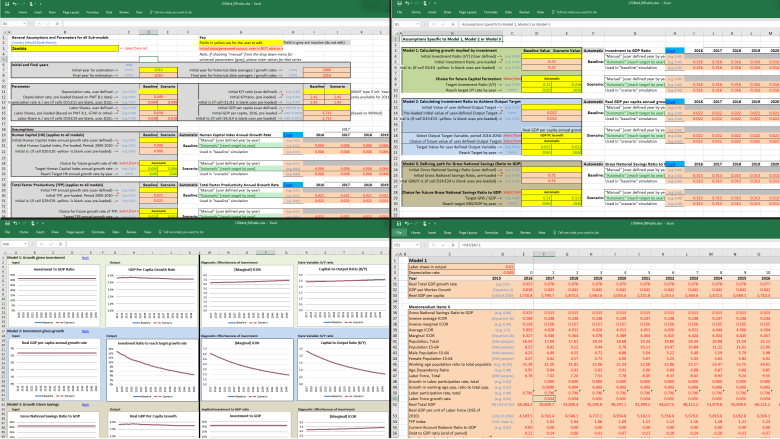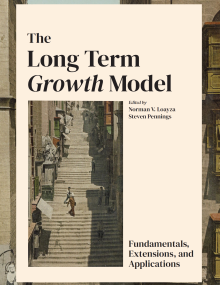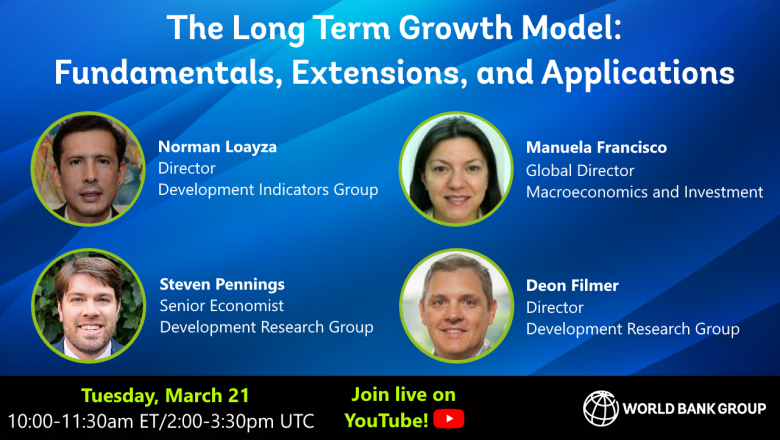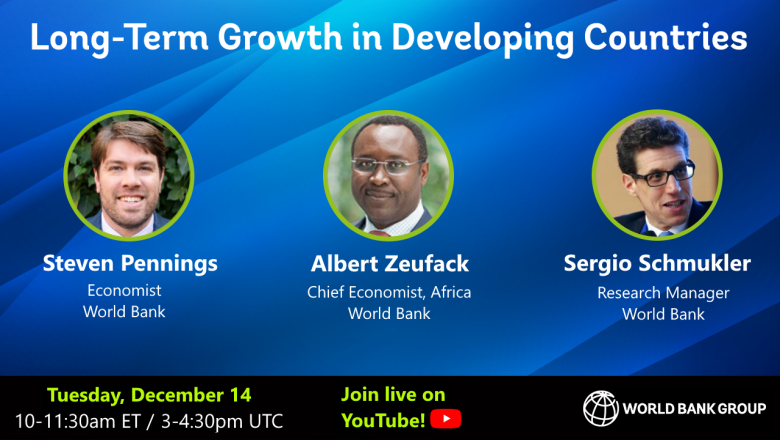Jump to: Public Capital | TFP | Natural Resources | Human Capital
Public Capital Extension (LTGM-PC)
The LTGM-PC is an extension of the standard LTGM (above) which separates the total capital stock into public and private portions, and adjusts the public component for quality. The LTGM-PC spreadsheet allows users to analyze the effect of an increase in public or private investment or the quality of public investment on economic growth. The LTGM-PC spreadsheet is similar to the standard LTGM: transparent (no macros) and easy-to-use, and with all relevant data preloaded for almost all countries. The LTGM-PC also includes a new cardinal Infrastructure Efficiency Index (IEI), which measures the quality of public capital. In the model, public investment generates a larger boost to growth if existing stocks of public capital are low, or if public capital is particularly important in the production function. The LTGM-PC is described in the working paper “Assessing the Effect of Public Capital on Growth: An Extension of the World Bank Long-Term Growth Model” by Devadas and Pennings. The Excel tool, working paper, and an appendix to the working paper are downloadable:
LTGM-PC latest version: LTGM-PC v5.72 (Excel file)
LTGM-PC Working paper | Appendix (PDF) | Infrastructure Efficiency Index (Excel file)
Total Factor Productivity Extension (LTGM-TFP)
The LTGM-TFP is an Excel-based companion to the standard LTGM that helps users assess a country’s potential for improving its TFP growth rate over the next few decades. The LTGM-TFP toolkit combines a country’s scores for innovation, education, market efficiency, infrastructure, and institutions—which have been shown in the literature to affect TFP growth—into a new “TFP determinant index”. Based on a fixed-effects regression model, the “TFP determinant index” then quantifies the future path for TFP growth in the LTGM-TFP toolkit for each country. That TFP growth path can be fed into the standard LTGM or LTGM-PC spreadsheets to determine paths for GDP growth or poverty reduction. The methodology is described in the companion working paper (please cite when using the toolkit):
Kim, Young Eun; Loayza, Norman V.. 2019. “Productivity Growth: Patterns and Determinants across the World.” Policy Research Working Paper, No. WPS 8852. Washington, D.C.: World Bank Group.
The Excel-based tool and working paper are downloadable:
LTGM-TFP latest version: LTGM-TFP v1 (Excel file)
LTGM-TFP Working paper (PDF)
Natural Resource Extension (LTGM-NR)
The LTGM-NR is an extension of the standard LTGM which adds natural resource sector to analyze (i) how long-run growth evolves in commodity exporting countries, (ii) the long-run growth impacts of commodity price shocks and (iii) the long-run growth impacts resource discoveries. The LTGM-NR spreadsheet is similar to the standard LTGM: transparent (no macros) and easy to use, with relevant data preloaded data for 56 resource-rich countries. The LTGM-NR also allows the analysis of how different fiscal rules – such as a Hartwick rule, structural surplus rule, or balanced budget rule – affect long run growth. In the default version of the model, (i) fiscal rules that prioritize public investment generally lead to the largest increases in long-term growth and (ii) we differentiate between different output measures such as real Gross Domestic Income (GDI) (which is directly affected by commodity price shocks) and real GDP (which is only affected indirectly). The LTGM-NR also captures the effect of other (non-resource) growth fundamentals in resource-rich economies, and it is better suited to general growth analysis in these countries than the standard LTGM. However, the LTGM-NR is a long-run supply-side model, and so does not capture the short-run effects of commodity price and discovery shocks that operate through aggregate demand. The LTGM-NR is described in the working paper “Assessing the Effects of Natural Resources on Long-Term Growth: An Extension of the World Bank Long Term Growth Model” by Loayza, Mendes, Mendes Ramos and Pennings (please cite when using the tool). The working paper, spreadsheet-based toolkit, and instructions on how to use it (including a worked example) are downloadable:
LTGM-NR latest version: LTGM-NR v1.0 (Excel file)
LTGM-NR Working paper (PDF) | Instructions and worked example (PDF)
Human Capital Extension (LTGM-HC)
The LTGM-Human Capital Extension is an Excel-based tool that helps users model future human capital growth of the workforce. The LTGM-HC uses the same broad definition of human capital as the World Bank Human Capital Index (HCI): pre-tertiary schooling quantity and schooling quality (together, learning-adjusted years of schooling); and health measured by Adult Survival Rates and Not Stunted Rates for children. The LTGM-HC is based on age cohorts: human capital is embedded in each age cohort when they are children, which then improves their productivity when they start working. Relative to the HCI, a cohort-based approach allows for a dynamic analysis of when improvements in schooling or health will affect the productivity of the workforce. The tool also incorporates the “human capital dividend” from past increases in schooling or health, which result in a positive but slowing human capital growth rate of the workforce when future HC attainment of children is stagnant (see Blog). The LTGM-HC tool has preloaded data on past HC by cohort, and includes several inbuilt future scenarios for each schooling or health component for each country. Users can also build their own scenarios with specific targets for each HC component in their country of interest. In the final step, the human capital growth path of the workforce (to 2100) is then fed into the standard LTGM (or LTGM-PC or other growth model) to analyze the effects on GDP growth. Please read the readme tab in the LTGM-HC spreadsheet for instructions on how to use the tool. An online appendix provides human capital estimates for every country.
Latest version: LTGM-HC v1.0 (Excel file, October 2025)
LTGM-HC Working paper (PDF) | Online Appendix with Country Estimates (Excel file) | Blog on Growth Impacts of Human Capital





